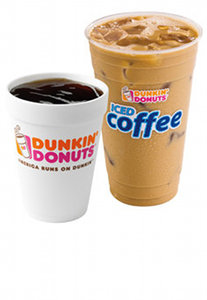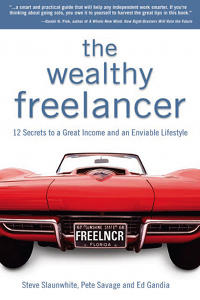Posted by Elena del Valle on November 8, 2010

Dunkin Donuts Hot Coffee and Iced Coffee Silo
Photos: Dunkin Donuts, Starbucks, Nespresso
If you are 45 and older and a coffee aficionado you are in good company. Fear not that your cup of jobe will disappear anytime soon. The number of coffee drinkers and the amount of coffee they drink has remained about the same in the last few years. Adults 45 and older, especially those 55 and older, are where the highest demand for coffee is today. This market segment is likely to drive coffee sales between 2010 and 2015.
Think the price of good old coffee has skyrocketed? You are right. Growth in the coffee market lately has been driven mostly by the higher prices paid for coffee. A more modest percent of the growth is from coffee lovers’ increase in consumption.

Starbucks Mocha Light Frapuccino
It is true that the economic downturn has resulted in a reduction of ready-to-drink (RTD) coffee purchases. As Americans watch their wallets and their waists demand for some sugary RTD products and heavily processed related products that are expensive and high in calories may continue to wane.
Before adjusting for inflation, retail sales of coffee including ground, whole bean, instant and RTD products grew 19 percent in five years, from $6.1 billion in 2005 to $7.2 billion in 2010, according to recent data from Mintel, an international research company.
An example of this has been the United States invasion by Swiss coffee maker Nespresso. In the last years the company which tightly controls sales of its coffee making machines that only accept Nespresso capsules sold exclusively at brand boutiques and by mail has made significant inroads in the luxury coffee market. Nestlé owned Nespresso has 190 boutiques in 50 countries, according to the company website.
“While we have grown exponentially in the United States over the past few years, there is still a large, un-tapped coffee-loving population that is not engaged in the Nespresso brand,” said Frederic Levy, president, Nespresso North America, in a press release. Company representatives did not respond to requests in writing and phone calls to the multinational’s Swiss headquarters and North American offices.

Nespresso machines only work with Nespresso capsules sold exclusively by Nespresso
There are 13 Nespresso stores in North America. Of those, there are 10 company operated boutiques in the United States, including Nespresso’s flagship Boutique Bars in New York City and Miami, and one in Boston as well as a Boutique-in-Corner location at Sur La Table in Scottsdale, Arizona, and five Boutique-in-Shop locations at Bloomingdale’s in SoHo, New York, Chevy Chase, Maryland, Chicago, Illinois, and San Francisco and Costa Mesa, California.
In the first half of this year Nespresso’s sales in the United States and Canada increased 45 percent. Levy indicated in a Reuters interview in September 2010 that his company is targeting annual growth of 35 percent in the region for the next five years, hoping there is continuing demand for high end coffee products.
Mintel experts expect coffee sales growth to continue steadily over the next five years. Notable exceptions are instant coffee (except among Hispanics), which has exhibited a decline in the past five years and RTDs which are expected to show only minimal growth in the next few years.
As older adults’ consumption wanes today’s young coffee drinkers and their preferences will become more attractive to coffee sellers. According to the Mintel study, young adults and teens consume much less coffee than older adults often preferring energy drinks to coffee. When they drink coffee they do so at cafes where they often select cream and sugar enhanced coffee drinks like Starbucks’ Frappuccino. Tea, especially among Asians, is another competitive product. Forward planning coffee companies may wish to launch products to target these desirable market segments.
Hispanics, according to popular belief and the Mintel study, love coffee. Because this market segment is booming, along with other emerging markets (Asians, African-Americans and Hispanics account for 80 percent of the growth in the United States according to the Geoscape 2010 American Marketscape DataStream report), it will probably be behind a significant part of the anticipated coffee products growth in the next five years.
Posted by Elena del Valle on November 5, 2010

The Wealthy Freelancer book cover
Photos: Alpha, thewealthyfreelancer.com
Freelancers or workers without long term ties to a single employer often work in journalism, book publishing, writing, editing, copy editing, proofreading, indexing, copy writing, computer programming, graphic design, web design, consulting, tour guiding, public relations and translating.
According to the Bureau of Labor Statistics, in 2005 10.3 million people in the United States (the equivalent of 7 percent of the working population) earned their living as free agents (see Wikipedia.com). For some it is a way to make ends meet in between jobs and for others it can be a liberating way to work on a regular basis.

Co-author Ed Gandia
Copywriters Steve Slaunwhite, Pete Savage and Ed Gandia believe working as freelancers is ideal as a permanent way to earn a living. So much so that they teamed up to write The Wealthy Freelancer 12 Secrets to a Great Income and an Enviable Lifestyle (Alpha, $16.95), a 274-page book about the merits of working freelance published this year. They start by explaining that being wealthy isn’t just about the money; instead it’s about “the life you build- and the kind of person you become in the process.”
They suggest readers look closely at the projects, clients, income and lifestyle that they would like to have. According to them, “A wealthy freelancer is someone who consistently gets the projects, clients, income and lifestyle he or she wants.”
The book is divided into 12 chapters, one for each secret with titles such as Master the Mental Game, Cultivate Repeat and Referral Business, Bring Focus to Your Freelance Business, and Create Alternative Streams of Income; followed by a Where Do You Go from Here? section and an appendix.


Co-authors Steve Slaunwhite and Pete Savage
In addition to being a copywriter Slaunwhite is also a marketing coach and speaker. Prior to this title he authored The Complete Idiot’s Guide to Starting a Web-Based Business and The Everything Guide to Writing Copy, and Fast Track to Great Clients. Savage, a resident of Peterborough, Canada, is a marketing consultant, speaker and coach. Gandia, a resident of Marietta, Georgia, is also a marketing consultant, speaker and coach.

Click here to buy The Wealthy Freelancer
Comments:
Filed Under: Books
Posted by Elena del Valle on November 3, 2010
By Mark Sneider
Managing partner, RSW US

Mark Sneider, managing partner, RSW US
Photo: RSW US
In this brave new and ever-changing world of the marketing of marketing services, managing your new business program the same old way simply isn’t going to be sustainable. You have to be more aggressive and you have to get more of your agency’s team to embrace the spirit of new business.
In our most recent survey on agency new business (rswus.com/surveys/index.php – requires sign up), marketing services executives state that the top reason why they find it more difficult to obtain new business this year, relative to years past is because it is much more challenging to break through to prospects.
The real eye opener is the fact that this year 63 percent stated that this was a top reason – compared to only 46 percent in 2009 and 44 percent in 2008.
Click here to read the entire article It Takes A Village
Posted by Elena del Valle on November 1, 2010

Singer and song writer Martha Gomez
Photo, song: Martha Gomez, Hope Sings
Beth Blatt first approached Martha Gomez to ask her to write a song free of charge. Oh and by the way could she do it quickly because time was limited. Gomez obliged, writing the song within 48 hours and within less than a week they were in the recording studio.
So was born the theme song for Hope Sings, a new and ambitious company founded by Blatt, a New York resident planning to raise funds in the United States and abroad for microfinance for women around the world and to promote the work of little known musicians. Scroll down to listen to the song La Esperanza Canta in Spanish from the Hope Sings album.
La Esperanza Canta, Spanish for hope sings, is the theme song for the eponymous company. Singer and song writer Gomez wrote and recorded the song inspired by the stories of three women in Nicaragua who benefited from receiving micro loans.
In 2005, Gomez was nominated for the Billboard Latin Music Latin Jazz category with Paco De Lucia, Gonzalo Rubalcaba and Nestor Torres and according to promotional information The Los Angeles Times described her as “an exceptional talent with a sublime voice.” She has shared the stage with a wide range of music industry personalities including Mercedes Sosa and Bonnie Raitt, and recently released her fifth album.
“When I began Hope Sings, I knew I wanted a theme song for the project that captured the our spirit, musically and lyrically. We’d gotten lots of songs submitted for theme song, and they were great songs, but none were the right feel. I loved Marta’s work courtesy of the Putumayo collections, but I didn’t know anyone who knew her,” said Blatt who went on to email the Colombian song writer directly. Gomez responded with enthusiasm and traveled to Guatemala to help a micro-financing organization. The Hope Sings mission is “to help women around the world out of poverty by supporting micro-finance.”
Click on the play button to listen to La Esperanza Canta



















